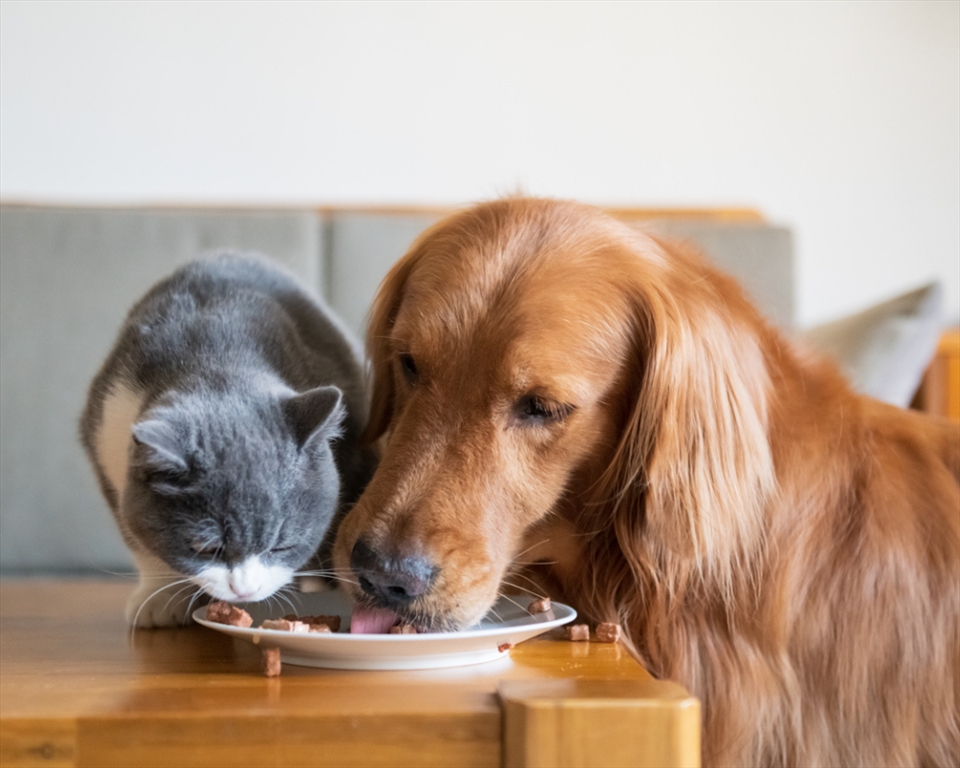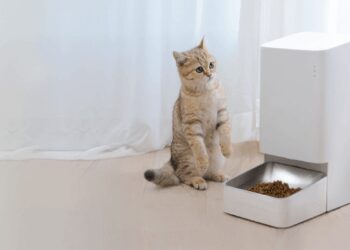The way we nourish our animal companions is on the cusp of a revolutionary transformation. No longer confined to traditional kibble and canned food, the future of pet nutrition is rapidly evolving, driven by scientific breakthroughs, technological advancements, a deeper understanding of animal biology, and growing consumer demand for healthier, more sustainable, and increasingly personalized dietary solutions. This isn’t just about what goes into the food bowl; it’s about optimizing every aspect of a pet’s diet for peak health, longevity, and overall well-being.
From cutting-edge ingredient sources and precision-tailored formulas to smart feeding systems and advanced diagnostic tools, the pet food industry is embracing innovations that promise to redefine how we fuel our furry, feathered, or scaled family members. This comprehensive article delves into the exciting trends shaping the next generation of pet nutrition, explores the science behind these advancements, and offers a glimpse into a future where pet diets are more customized, sustainable, and impactful than ever before.
The Drivers of Nutritional Evolution in Pet Care

The burgeoning interest in advanced pet nutrition stems from several interconnected factors that reflect shifting societal values and scientific progress.
A. Pet Humanization
Pets are increasingly viewed as integral family members, deserving of the same high-quality, health-conscious food choices afforded to humans. This drives owners to seek out premium, specialized, and often human-grade options.
B. Scientific Advancements in Animal Nutrition
Ongoing research in veterinary nutrition, nutrigenomics (how nutrients interact with genes), and the gut microbiome is continually revealing deeper insights into pets’ physiological needs and how diet impacts long-term health.
C. Technological Innovation
From smart feeding devices to advanced diagnostic tools, technology is enabling greater precision, personalization, and monitoring of pet diets.
D. Sustainability Concerns
The environmental impact of traditional pet food production is a growing concern. This fuels the search for more eco-friendly and ethically sourced ingredients and production methods.
E. Health and Longevity Focus
As pets live longer, there’s a greater emphasis on diets that can prevent age-related diseases, manage chronic conditions, and promote vitality throughout their lives.
F. Addressing Common Pet Health Issues
Many prevalent pet ailments (allergies, obesity, digestive problems) are directly linked to diet. The search for nutritional solutions to these issues is a powerful driver of innovation.
These forces are collectively pushing the boundaries of pet nutrition far beyond the conventional bags of kibble that have dominated the market for decades.
Key Pillars Shaping the Future of Pet Nutrition
The future of pet nutrition is built upon several transformative trends, each bringing unique benefits and opportunities.
A. Hyper-Personalized Nutrition
This is perhaps the most significant shift, moving away from “one-size-fits-all” diets to formulas tailored to an individual pet’s unique needs.
- Life Stage and Breed-Specific Diets: Already common, but becoming more precise (e.g., specific formulas for senior small breeds with joint issues).
- Genetic Profiling (Nutrigenomics): Analyzing a pet’s DNA to understand their predispositions to certain conditions (e.g., obesity, allergies, specific nutrient requirements) and formulating diets to optimize their genetic potential and mitigate risks.
- Microbiome Analysis: Understanding the unique composition of a pet’s gut bacteria. Diets can then be designed to promote a healthy microbiome, impacting digestion, immunity, and even mood.
- Activity Level and Lifestyle: Tailoring caloric intake and nutrient balance based on a pet’s energy expenditure (e.g., highly active sporting dog vs. sedentary house cat).
- Health Conditions: Precision diets for managing specific diseases like kidney disease, diabetes, heart conditions, or severe allergies, with formulations adjusted based on the pet’s individual response.Delivery: This could involve custom-blended fresh food services, personalized supplement packs, or highly adaptable dry formulas.
B. Novel and Sustainable Protein Sources
Addressing environmental concerns and seeking highly digestible, nutritious alternatives to traditional meat.
- Insect-Based Proteins: Black soldier fly larvae and crickets are leading this charge. They are highly digestible, environmentally sustainable (requiring significantly less land, water, and feed), and have a complete amino acid profile. They also offer a novel protein source for pets with common meat allergies.
- Cellular Agriculture (Cultivated Meat): Lab-grown meat, produced from animal cells without the need for traditional livestock farming. While still in early development for pet food, it promises real animal protein with drastically reduced environmental impact and no ethical concerns related to animal welfare.
- Algae and Fungi-Based Proteins: Microalgae (like spirulina or chlorella) and specific fungi can be cultivated sustainably to produce protein-rich ingredients.
- Fermentation-Derived Proteins: Precision fermentation uses microorganisms to produce specific proteins (e.g., dairy or egg proteins) efficiently and sustainably.
- Upcycled Ingredients: Utilizing nutrient-rich by-products from the human food supply chain (e.g., spent brewer’s grains, fruit and vegetable pulps, organ meats not typically consumed by humans) that would otherwise go to waste. This promotes a circular economy and reduces food waste.
C. Emphasis on Fresh and Minimally Processed Diets
A growing movement away from heavily processed kibble towards diets that retain more natural nutrients.
- Fresh-Cooked Diets: Human-grade ingredients, gently cooked to preserve nutrients, often delivered frozen or refrigerated.
- Raw Diets: Biologically appropriate raw food (BARF) or whole prey diets, emphasizing uncooked meats, bones, and organs. Requires careful handling to mitigate bacterial risks.
- Freeze-Dried and Air-Dried Diets: These methods remove water while preserving nutrients, offering convenience with minimal processing.
- Hybrid Feeding: Combining fresh or raw components with high-quality dry kibble for a balanced and varied diet.
D. Advanced Nutraceuticals and Supplements
Beyond basic vitamins and minerals, a focus on bioactive compounds that offer therapeutic benefits.
- Targeted Probiotics and Prebiotics: Tailored to support specific gut microbiome health, impacting digestion, immunity, and even brain function (the gut-brain axis).
- Specialized Antioxidants: For anti-aging, immune support, and combating oxidative stress.
- Specific Joint Support: Next-generation formulations of glucosamine, chondroitin, green-lipped mussel, and other compounds.
- Cognitive Boosters: Ingredients like MCTs (medium-chain triglycerides), resveratrol, and specific vitamins to support brain health in aging pets.
- Immune Modulators: Compounds designed to fine-tune the immune system, beneficial for pets with allergies or autoimmune conditions.
E. Smart Feeding Systems and Monitoring
Technology that optimizes feeding accuracy and tracks consumption patterns.
- Automated Smart Feeders: Dispense precise, pre-programmed portions at scheduled times, often controllable via a smartphone app. Many include features like slow-feeding modes or food level sensors.
- Microchip-Activated Feeders: Ensure only the designated pet accesses a specific food, crucial for multi-pet households with different dietary needs or weight management.
- Integrated Scales: Bowls that measure food intake, providing data on appetite changes.
- Hydration Monitors: Smart water bowls that track water consumption, alerting owners to changes that could indicate illness.
- Remote Monitoring: Data from smart feeders and wearables integrating into vet platforms for continuous dietary and activity tracking, enabling proactive health management.
F. Sustainable Packaging and Supply Chains
Reducing the environmental footprint of pet food delivery.
- Recyclable/Compostable Packaging: Moving away from multi-laminate plastic bags to more eco-friendly materials.
- Refill Programs and Bulk Options: Reducing single-use packaging.
- Local Sourcing: Minimizing transportation emissions.
- Carbon-Neutral Production: Companies committing to reducing and offsetting their carbon emissions during manufacturing.
The Benefits of This Nutritional Revolution

These innovations promise profound benefits for pets, owners, and the planet.
A. Optimal Pet Health and Longevity
Precision nutrition tailored to individual needs can prevent disease, manage chronic conditions more effectively, and extend the healthy lifespan of pets.
B. Enhanced Disease Prevention and Management
Targeted diets can mitigate genetic predispositions, support specific organ functions, and reduce inflammation, leading to better outcomes for conditions like allergies, obesity, diabetes, and kidney disease.
C. Improved Well-being and Performance
Pets on optimized diets often exhibit more energy, better coat quality, healthier digestion, and improved cognitive function. For working or athletic dogs, performance can be significantly enhanced.
D. Reduced Environmental Impact
Sustainable ingredient sourcing, eco-friendly packaging, and efficient production methods contribute to a smaller carbon footprint and a healthier planet.
E. Greater Convenience and Peace of Mind for Owners
Smart feeding systems simplify daily routines, and data-driven insights offer reassurance that pets are receiving optimal nutrition and allow for early detection of issues.
F. Deeper Understanding of Pet Biology
Ongoing research, fueled by this innovation, will continue to unlock secrets about pet health, leading to even more effective nutritional strategies.
Challenges and Considerations for the Future
While promising, the future of pet nutrition also presents challenges that need to be addressed.
A. Cost and Accessibility
Highly personalized or novel ingredient diets can be significantly more expensive, potentially limiting access for some pet owners.
B. Regulatory Frameworks
Current regulations for pet food may not be equipped to handle rapid innovation in ingredients (e.g., cultivated meat) or personalized formulations. Clear guidelines are needed to ensure safety and transparency.
C. Scientific Validation
While exciting, new ingredients and nutritional approaches require rigorous, independent scientific validation to prove their long-term safety and efficacy. Avoiding “fad” diets driven by marketing hype is crucial.
D. Owner Education
The increasing complexity of nutritional choices requires pet owners to be well-informed and guided by veterinary professionals.
E. Quality Control and Traceability
Ensuring the quality, safety, and traceability of novel ingredients and personalized formulas across complex supply chains will be paramount.
F. Palatability and Acceptance
Pets can be finicky eaters. New ingredients or formats must be palatable and appealing to ensure acceptance.
Practical Steps for Pet Owners Today
You don’t have to wait for the distant future to improve your pet’s nutrition.
A. Consult a Veterinary Nutritionist
For truly personalized advice, especially for pets with specific health conditions, a board-certified veterinary nutritionist is an invaluable resource.
B. Prioritize High-Quality Ingredients
Read pet food labels carefully. Look for clearly identifiable, high-quality protein sources as the first ingredient, and avoid unnecessary fillers, artificial colors, flavors, and preservatives.
C. Consider Fresh or Minimally Processed Options
Explore reputable brands offering fresh-cooked, raw, freeze-dried, or air-dried diets. Research safety protocols if considering raw feeding.
D. Explore Sustainable Options
Look for pet food brands utilizing insect proteins, upcycled ingredients, or those with clear commitments to ethical sourcing and sustainable packaging.
E. Utilize Smart Feeding Technology
Consider investing in a smart feeder or water bowl to ensure accurate portions and monitor consumption, providing valuable data for your vet.
F. Don’t Overlook Supplements (Vet-Guided)
Discuss with your vet if targeted supplements (probiotics, omega-3s, joint support) could benefit your pet, especially as they age or for specific health needs.
G. Monitor Your Pet’s Health Closely
Pay attention to changes in weight, coat quality, energy levels, digestion, and behavior. These are key indicators of how well their current diet is serving them.
Conclusion
The future of pet nutrition is bright, promising an era where dietary strategies are as unique as our individual pets. Driven by a blend of scientific discovery, technological innovation, and a growing commitment to sustainability, pet food is evolving beyond mere sustenance to become a powerful tool for enhancing health, extending longevity, and strengthening the bond we share with our animal companions.
While the journey will involve navigating new challenges, the benefits of more precise, sustainable, and effective nutrition are undeniable. By staying informed, partnering with veterinary professionals, and making conscious choices, pet owners can proactively participate in this nutritional revolution, ensuring their beloved pets thrive for many happy, healthy years to come. The food bowl is no longer just a dish; it’s a gateway to a future of optimal pet well-being.












